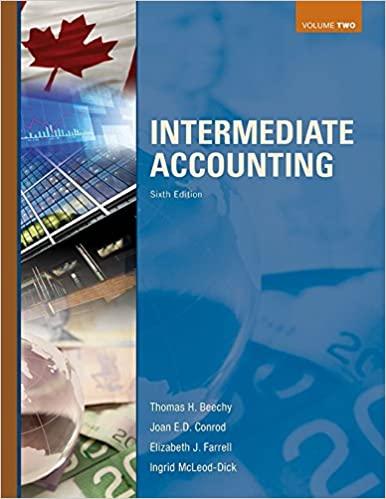Please go through the .jpg images as
1.Question 1 Boris Company has multiple business units. Unit A has the following information: sales revenue is $200,000; variable expenses are $140,000; fixed expenses are $100,000. Fixed expenses which are mostly represented by shared capacity costs (e.g., rent, depreciation, etc.) - are allocated evenly to the business units. What is the effect on Boris Company as a whole if Unit A is eliminated? (3' Total profit will not change. (I. Total profitwill decrease by $60,000. r. Total profitwill decrease by $40,000. It. Total profit will increase by $40,000. 2.Question 2 Lillian Corporation currently makes a key input into its main product. Bernard, a manager within Lillian, is arguing that the organization should outsource production of this input, and buy it from a third-party supplier. Currently, the per-unit manufacturing costs are $18 in materials, $20 in labor, $12 in variable manufacturing overhead, and $8 in fixed costs per unit. The fixed costs are allocated from the total of fixed costs generated by the entire factory. Bernard's thirdparty supplier would charge Lillian $60 per unit, and could sell to Lillian the entire 1,000 units Lillian needs each year. Also, if Bernard's plan is implemented, it can use the capacity currently being used to produce an input to generate additional profit of $11,000. Assuming Lillian is adopting a financial perspective, which of the following is true? 1 point (I. Lillian should follow Bernard's plan, because doing so will increase profits by $1,000. It. Lillian should follow Bernard's plan, because doing so will increase profits by $9,000. (I; Lillian should not follow Bernard's plan, because doing so will decrease profits by $10,000. r. Lillian should not follow Bernard's plan. because doing so will decrease profits by $2,000. 3.Question 3 Jonathan Corporation makes an unassembled chair that sells for $25. Product costs are $8 per chair. Lois, the product line manager, suggests that Jonathan Corp. should instead sell an assembled chair, as revenues will be higher. The market price for the assembled chair would be $30. The cost of additional assembly is $4. Which of the following statements are true? (Check all that apply.) I' The $30 market price for the assembled chair is relevant. I The $4 cost of additional assembly is irrelevant. I The $8 product costs of the unassembled chair are relevant. I- The $4 cost of additional assembly is relevant. I 4.Question 4 True or false? Fixed costs are always irrelevant in operational decisions. True (I; False 5.Question 5 Replacing equipment is always more expensive. (I; True r. False 6.Question 6 Ryan is a manager in a bank. He is using cost information to make a number of operational decisions. Some of these costs are salaries for other employees, who have formal one-year employment contracts. Which of the following statements are true regarding these costs? (Check all that apply.) 1 point |' Ryan must consider contracted salary costs in most operational decisions. I Ryan can deem contracted salary costs as irrelevant for most operational decisions. I- Ryan can deem contracted salary costs as relevant for most decisions. I Ryan can classify contracted salary costs as sunk. 7.Question 7 Shelby is considering whether to drop a product line from her business. Some administrative costs are being allocated to the product line but will not change in total if Shelby decides to drop the product line. Which of the following statements are true regarding these costs? (Check all that apply.) 1 point I Shelby will drop the product line from her business because of administrative cost savings. |' The allocated administrative costs are irrelevant because they are not direct costs. I Administrative costs are always irrelevant. I The allocated administrative costs may look like cost savings resulting from dropping the product line but are actually irrelevant. l- 8.Question 8 The Central division of NLH, Inc. is considering an investment, which has the following projected information: Revenues = $100,000 All expenses = $85,000 Investment value = $140,000 Upper management of NLH, Inc. has established the cost of capital at 10%. If the manager is compensated based on residual income, will she make the investment? If. No, because the residual income percentage is less than the cost of capital percentage. (I; No, because the cost of capital is positive. (I; Yes, because the residual income is $15,000 If. Yes, because the residual income from this investment is $1,000. 9. Two division managers in NLH, Inc. are individually considering whether to invest in a new product. Before the investment, the Wales division manager earns an average return on investment of 11%. The Campbell division manager earns an average of 9.5%. Managers are compensated based on improving return on investment. Projected profit from the investment is $20,000. The investment required for the project is $200,000. The cost of capital at NLH, Inc. has been set by upper management at 9.5%. Which manager(s) will exhibit behavior consistent with the underinvestment problem? 10.The manager of the Wales division of NLH, Inc. is considering making an investment to expand operations. The investment has the following projections: Revenues = $100,000 Cost of goods sold = $60,000 Operating expenses = $25,000 Income taxes = $5,000 Investment = $180,000 The required rate of return is 8%. The manager has a personal preference to NOT make the investment and is about to make a presentation about the investment to upper management. Which of the following is true? If. The manager will use either net income before taxes or net income after taxes as the profit measure. It. The manager will use net income before taxes as the profit measure, but not net income after taxes. If... The manager will not use either net income amount as the profit measure. I!" The manager will use net income after taxes as the profit measure, but not net income before taxes











